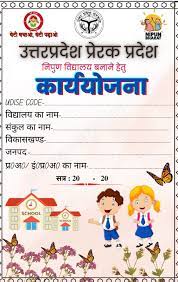Teaching Learning Material
Teaching learning materials refer to the resources used by educators to facilitate learning and understanding among students. These materials can be physical or digital, and they are designed to support classroom instruction and help students meet learning objectives. Here are some common types of teaching learning materials:
- Textbooks: Textbooks are the primary resource used to teach and deliver subject-specific information to students. They are typically written by subject experts and provide a structured approach to learning.
- Audio-visual materials: Audio-visual materials, such as videos, podcasts, and recordings, can be used to supplement classroom instruction and provide additional perspectives and resources for research and exploration.
- Interactive whiteboards: Interactive whiteboards can be used to display visual aids, allow students to interact with content, and facilitate classroom discussions.
- Worksheets: Worksheets can be used to reinforce learning, encourage critical thinking, and assess student knowledge.
- Models and manipulatives: Models and manipulatives are hands-on teaching aids that can be used to teach concepts in math, science, and other subjects. Examples include blocks, counters, and puzzles.
- Games and puzzles: Games and puzzles can be used to make learning more fun and engaging. They can also be used to reinforce learning and encourage critical thinking.
- Online resources: Online resources, such as videos, articles, and interactive tools, can be used to supplement classroom instruction and provide students with additional resources for research and exploration.
- Field trips: Field trips can be used to give students a firsthand experience of different environments and concepts.
- Classroom libraries: Classroom libraries can be used to encourage reading and provide students with additional resources for research and exploration.
Using a variety of teaching learning materials can help make learning more engaging, effective, and accessible for all students.
Teaching Learning Material in Hindi
Teaching learning material list
Here is a list of teaching and learning materials that can be used in the classroom:
- Textbooks: Textbooks are the traditional teaching materials used to deliver subject-specific information to students.
- Worksheets: Worksheets can be used to reinforce learning, encourage critical thinking, and assess student knowledge.
- Visual Aids: Visual aids, such as posters, charts, and graphs, can be used to support classroom instruction and help students visualize and understand complex concepts.
- Multimedia Resources: Multimedia resources, such as videos, podcasts, and interactive tools, can be used to supplement classroom instruction and provide students with additional perspectives and resources for research and exploration.
- Manipulatives: Manipulatives are hands-on teaching aids that can be used to teach concepts in math, science, and other subjects. Examples of manipulatives include blocks, counters, and puzzles.
- Models and Simulations: Models and simulations can be used to help students visualize and understand complex concepts in science, engineering, and other subjects.
- Games and Puzzles: Games and puzzles can be used to make learning more fun and engaging. They can also be used to reinforce learning and encourage critical thinking.
- Interactive Whiteboards: Interactive whiteboards can be used to display visual aids, allow students to interact with content, and facilitate classroom discussions.
- Classroom Libraries: Classroom libraries can be used to encourage reading and provide students with additional resources for research and exploration.
- Learning Management Systems: Learning management systems (LMS) can be used to organize and manage classroom materials, assignments, and assessments. They can also be used to facilitate communication between teachers and students.
Using a variety of teaching and learning materials can help make learning more engaging, effective, and accessible for all students.
Teaching Learning Material IN ENGLISH
Teaching learning materials refer to the resources used by educators to facilitate learning and understanding of the English language among students. These materials can be physical or digital, and they are designed to support classroom instruction and help students meet learning objectives. Here are some common types of teaching learning materials used for teaching English:
- Textbooks: Textbooks are the primary resource used to teach and deliver English language-specific information to students. They provide a structured approach to learning grammar, vocabulary, and communication skills.
- Audio-visual materials: Audio-visual materials, such as videos, podcasts, and recordings, can be used to supplement classroom instruction and provide additional perspectives and resources for research and exploration.
- Interactive whiteboards: Interactive whiteboards can be used to display visual aids, allow students to interact with content, and facilitate classroom discussions.
- Worksheets: Worksheets can be used to reinforce learning, encourage critical thinking, and assess student knowledge of English grammar and vocabulary.
- English language games and puzzles: English language games and puzzles can be used to make learning more fun and engaging. They can also be used to reinforce learning and encourage critical thinking.
- Online resources: Online resources, such as videos, articles, and interactive tools, can be used to supplement classroom instruction and provide students with additional resources for research and exploration.
- English language books and literature: English language books and literature can be used to encourage reading and provide students with additional resources for research and exploration.
- Language labs: Language labs provide students with a chance to practice speaking, listening, reading, and writing in English through interactive software and digital exercises.
Using a variety of teaching and learning materials can help make learning English more engaging, effective, and accessible for all students.

